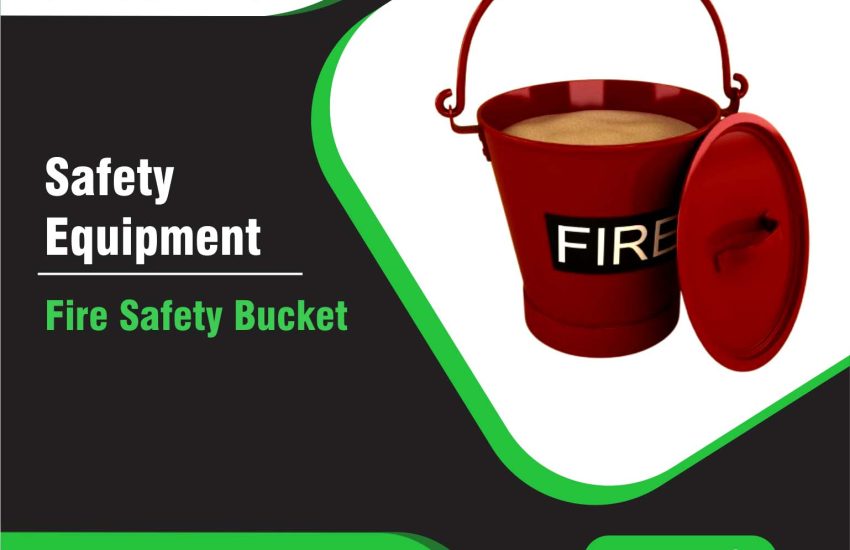Fire Safety Bucket is a vital tool for preventing and managing fires in homes, businesses, industrial sites, and outdoor environments. These buckets store materials like sand, water, or fire retardants to quickly respond to fire emergencies. In this article, we will explore the key specifications, features, and benefits of fire safety buckets to help you choose the right one for your needs.
What is a Fire Safety Bucket?
A fire safety bucket is designed to store firefighting materials such as water, sand, or fire-fighting foam. It is essential in places where fire hazards exist and quick access to firefighting tools is necessary. Common locations for fire safety buckets include homes, factories, warehouses, construction sites, and outdoor spaces. These buckets help tackle small fires before they spread.
Specifications of a Fire Safety Bucket
Several important specifications help ensure the fire safety bucket performs well in emergency situations. Here are the key details to consider:
1. Material and Durability
- Bucket Material: Fire safety buckets are often made from heavy-duty plastic, metal, or steel. Choose plastic for lightweight options ideal for sand or water storage, or metal/steel for more durable options suitable for fire retardants or chemicals.
- Heat Resistance: The bucket must resist high temperatures. Metal buckets usually provide better heat resistance, while plastic buckets must be rated for higher temperatures to prevent damage.
2. Size and Capacity
- Capacity: Fire safety buckets range in size from 5 liters (1.3 gallons) to 20 liters (5.3 gallons). Larger buckets are suitable for industrial use, while smaller ones fit residential or office settings.
- Dimensions: Ensure the bucket is the right size for the materials it will hold. A sand bucket, for example, should have enough width and depth to store enough sand to fight small fires.
3. Lid and Seal
- Lid: Many fire safety buckets feature a secure lid that helps prevent contamination and spillage during transport. A well-fitting lid also keeps dust and debris from reducing the effectiveness of fire retardants.
- Seal: Some fire safety buckets are equipped with an airtight seal to protect chemicals or fire retardants from moisture, ensuring they remain effective over time.
4. Handles and Portability
- Handle Design: Fire safety buckets are typically designed with reinforced handles for easy carrying, even when full of heavy materials. The handles should provide a secure grip.
- Portability: Choose a lightweight design for buckets that may need to be moved quickly in emergencies. The bucket should be easy to transport, even when filled.
5. Fire Safety Labels and Markings
- Clear Labeling: Look for fire safety buckets with clear labeling or symbols indicating their intended use. This helps users easily identify the contents and purpose of the bucket in an emergency.
- Reflective Markings: Some buckets have reflective markings to ensure visibility in low-light or night-time conditions.
6. Fire Retardant Materials
- Sand: Fire safety buckets filled with sand are effective for small fires, especially in high-risk environments. Sand smothers the flames and is readily available.
- Water: Some manufacturers design fire safety buckets specifically for water storage, allowing users to quickly extinguish small fires.
- Fire Extinguishing Chemicals: Other fire safety buckets hold fire retardant chemicals or foam, providing an additional layer of fire suppression for specific fire types.
Features of a Fire Safety Bucket
- Quick Access: The design of fire safety buckets ensures they are easy to grab and use in emergencies, enabling users to respond quickly to a fire.
- Versatile Use: Fire safety buckets are versatile and can store a variety of firefighting materials, including sand, water, or chemicals.
- Lightweight and Portable: Most fire safety buckets are lightweight and portable, making them easy to move during an emergency.
- Durable Construction: These buckets are built to withstand extreme conditions, from high temperatures to impacts.
- Visibility: Many fire safety buckets come in bright colors like red or yellow, enhancing visibility during a fire emergency.
- Easy Storage: Fire safety buckets are designed to be stackable and can be stored in emergency zones for quick access when needed.
Benefits of Using a Fire Safety Bucket
- Effective Fire Control: Fire safety buckets allow users to control or extinguish small fires, preventing them from escalating.
- Cost-Effective: Compared to larger fire suppression systems, fire safety buckets offer a budget-friendly solution for managing small-scale fires.
- Ease of Use: With their simple design, fire safety buckets are easy to operate without the need for specialized training.
- Versatility: Fire safety buckets are suitable for a wide range of settings, from homes to industrial environments, and are effective for various types of fires.
- Convenient Storage: These buckets are easy to store and can be placed strategically around buildings for quick access.
How to Choose the Right Fire Safety Bucket
When selecting a fire safety bucket, consider these factors:
- Material: Select the material based on the environment and the type of fire safety material you need to store (sand, water, or chemicals).
- Capacity: Choose a bucket size based on your needs. Larger buckets are better for industrial settings, while smaller buckets may be more appropriate for home use.
- Portability: Consider how often the bucket needs to be moved. Lightweight buckets are ideal for quick transport.
- Durability: Ensure the bucket can withstand the conditions it will face, such as high temperatures and physical impacts.
- Labeling: Look for clear, visible labeling to easily identify the bucket’s purpose and contents.
Conclusion
Fire Safety Bucket is an essential tool for controlling small fires. With its durable construction, versatility, and quick access design, it is an invaluable part of any fire safety plan. By considering the specifications and features of fire safety buckets, you can choose the right one for your home or business and ensure effective fire protection.


